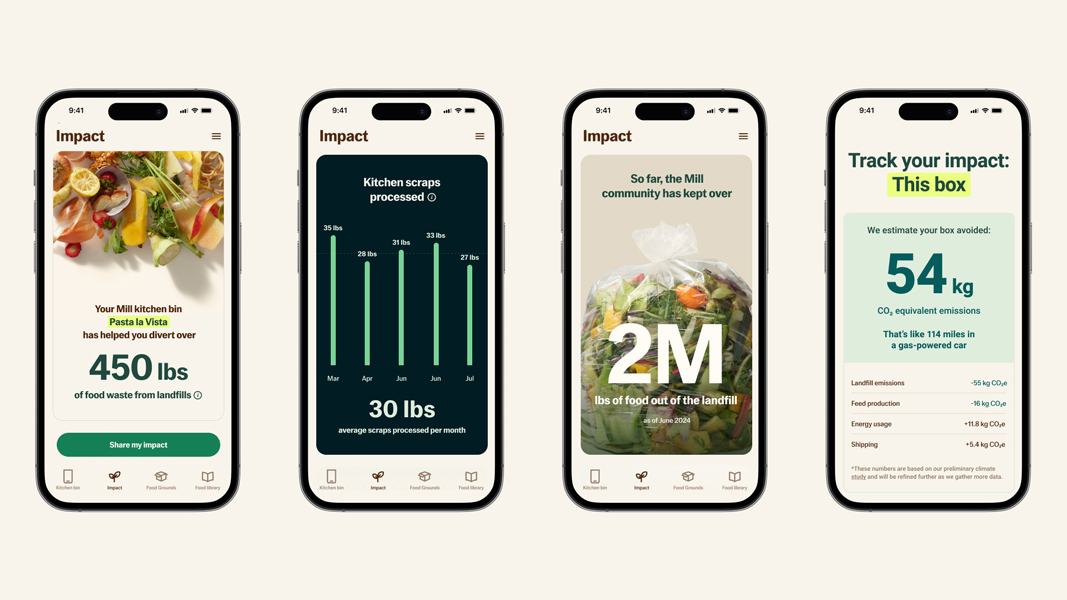Top: Mill’s connected food recycling bin has a built-in scale that captures the weight of food scrap inputs. Images courtesy of Mill
Mill, the in-home food recycler company, has a built-in scale in its connected device that captures the weight of food scrap inputs as small as 15 grams — the equivalent of a single strawberry. The company aggregated millions of device days of data from April 2023 to May 2024 and found the median Mill household added around 5.5 pounds of food scraps per household per week. “Notably, the median amount of food scraps added to Mill decreased over time — by over 20% over the first four months — and then stabilized,” reports the company. Over two million pounds of food were processed in the food scrap dehydration bins in the first year they’ve been in use. Mill surveyed hundreds of its customers on their food waste behaviors at home before and after using Mill. The majority shared that Mill had increased their awareness of how much food they were wasting, with 59% saying they produced more food waste than they thought. Survey results from customers reinforced this pattern, with one in three respondents noting that using Mill decreased the amount of food waste they generated. Source reduction yields significant household savings. With the average American family wasting almost $1,900 per year on uneaten food (based on ReFED data), a 20% reduction in food waste could save households at least $380/year. The survey also found that 73% of respondents reported putting zero food into the trash after having Mill at home.













